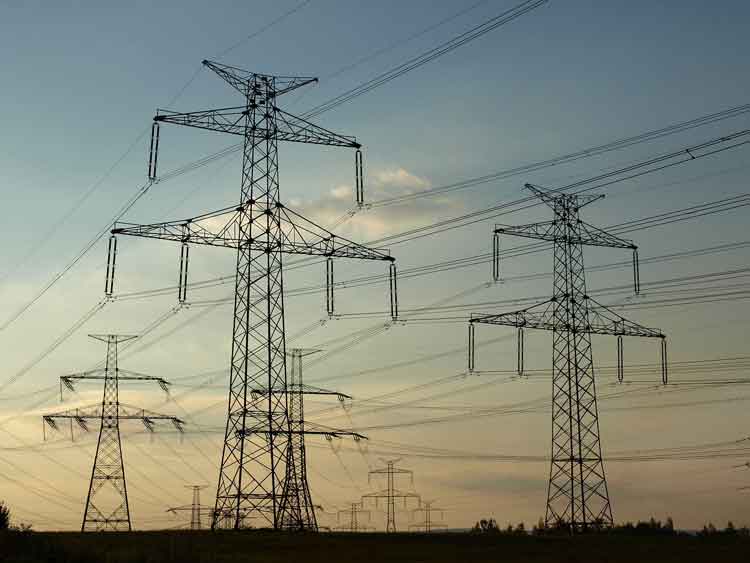Wind turbines stir up health scare
"I started to cry," Eaton, 57, recalled of her first sight of the Willow Creek Wind Project in late July. "They're going to be hanging over the back of our house, and now there's the medical thing."
"The medical thing" is new research suggesting that living close to wind turbines, as Eaton and her 60-year-old husband, Mike, soon will be doing, can cause sleep disorders, difficulty with equilibrium, headaches, childhood "night terrors" and other health problems.
Dozens of wind turbines are taking shape along Oregon 74, a designated Oregon Scenic Byway, near the home the Eatons have shared for 19 years.
Dr. Nina Pierpont of Malone, N.Y., coined the phrase "wind turbine syndrome" for what she says happens to some people living near wind energy farms. She has made the phrase part of the title of a book she's written called Wind Turbine Syndrome: A Report on the Natural Experiment. It is scheduled for publication next month by K-Selected Press of Santa Fe, N.M.
In contrast to those who consider wind turbines clean, green and an ideal source of renewable energy, Pierpont says living or working too close to them has a downside. Her research says wind turbines should never be built closer than two miles from homes.
Pierpont, 53, is a 1991 graduate of Johns Hopkins University School of Medicine and has a doctorate in population biology from Princeton University. Her interest was piqued by a wind farm being built near her upstate New York home, and she studied 10 families living near wind turbines built since 2004 in Canada, England, Ireland, Italy and the United States.
Pierpont's findings suggest that low-frequency noise and vibration generated by wind machines can have an effect on the inner ear, triggering headaches; difficulty sleeping; tinnitus, or ringing in the ears; learning and mood disorders; panic attacks; irritability; disruption of equilibrium, concentration and memory; and childhood behavior problems.
Concerns also are coming out of Europe about low-frequency noise from newly built wind turbines.
For example, British physician Amanda Harry, in a February 2007 article titled "Wind Turbines, Noise and Health," wrote of 39 people, including residents of New Zealand and Australia, who suffered from the sounds emitted by wind turbines.
According to Pierpont, eight of the 10 families in her study moved out of their homes.
"All these problems were resolved as soon as these people got away from the turbines, got in the car and drove away from the house," she said.
Mike Logsdon, director of development for Invenergy, developer of the 48 wind turbines under construction in the Willow Creek Wind Project, said he's heard of Pierpont's findings, but his 5-year-old company doesn't find them credible.
"We've had a number of other wind farms over the country and residents living by them and never had any problems," Logsdon said.
Invenergy has built and operates wind farms in Canada and Poland and in 12 states in the United States, Logsdon said. The company has 1,200 megawatts in production and is building 600 megawatts this year. The 72-megawatt Willow Creek Wind Project near the Eatons' home is scheduled to start producing electricity Jan. 1.
If Pierpont's theories gain acceptance, decisions on where future wind energy farms are built could be affected.
Last year, more than one-third of all new power capacity in the United States, roughly 5,000 megawatts, was generated by wind turbines, said Joseph Beamon, spokesman for the U.S. Department of Energy in Washington.
Meanwhile, a U.S. Department of Energy report said demand for electricity is likely to grow 40 percent in the next 22 years in the United States alone, with 20 percent of the nation's power generated by wind turbines, he said.
The Eatons and their neighbors have more to worry about than the Willow Creek Project. Approval was given July 25 by the Oregon Facilities Siting Council for construction of as many as 400 more wind turbines in the nearby Shepherds Flat Wind Project spanning parts of Gilliam and Morrow counties. The planned 909-megawatt project by Caithness Energy of Chicago is expected to be the largest wind farm on earth, generating enough peak energy to power 225,000 homes.
"Man, this whole country is going to be windmills," said a dismayed Denny Wade, 59, a railroad worker and neighbor of the Eatons.
He and his wife, Lorrie, a 53-year-old schoolteacher, live three-quarters of a mile from one of Willow Creek's turbines. The Wades had planned to sell the home where they've lived for four years and build a retirement home on a knoll 200 yards away with a view of Mount Hood.
"Now, the view that it had is all windmills," Wade said. "I didn't move out there to view windmills."
But Denny Wade's larger concern is his vulnerability to migraine headaches. Although not everyone living near wind turbines experienced headaches, Pierpont's research suggests "everyone with pre-existing migraines" developed headaches by living near the wind generators.
The Wades scrapped plans to build a new home and hope to sell their 42 acres and move, they said.
Morrow County planner Carla McLane said potential health issues never were raised during the planning process in her county, and the opportunity to appeal has passed. The potential effects of turbines on the scenic values of Oregon 74 never were brought up in hearings he attended, said Terry Tallman, Morrow County Commission chairman.
Generally, wind energy farms have been welcomed in this sparsely settled corner of the state, Tallman said. Tax revenues from the wind farms will be distributed to the counties, public schools, park and recreation districts and fire departments, he said.
"Everybody that I've talked to has been very happy," he said, adding that some on whose property the turbines are being built intend to retire on the income they receive.
"I think it's a good thing," Ron Wyscaver, 40, a neighbor of the Eatons and Wades, said of the wind turbines.
Caithness first proposed a 105-megawatt Shepherds Flat Project in 2002, then applied to the state for the larger project two years ago, McLane said. The project was so large it went to the Energy Facilities Siting Council, where it received the go-ahead to start construction.
Potential medial problems aside, Sherry Eaton says the wind turbines will wreck the tranquillity the couple came to this remote setting to find. She drives 90 miles a day to and from her job in Hermiston so they can live in the high-desert setting.
"When you come home from work, everything drains away from you because it's so quiet and peaceful," she said, adding that's about to end.
"Now we are going to have to listen to those windmills: Whoosh! Whoosh! Whoosh!" she said.
Related News

UK to End Coal Power After 142 Years
LONDON - The United Kingdom is poised to mark a significant milestone in its energy history by phasing out coal power entirely, ending a reliance that has lasted for 142 years. This decision underscores the UK’s commitment to combating climate change and transitioning toward cleaner energy sources, reflecting a broader global movement away from fossil fuels. As the country embarks on this journey, it highlights both the achievements and challenges of moving towards a sustainable energy future.
A Historic Transition
The UK’s relationship with coal dates back to the Industrial Revolution, when coal was the backbone of its energy supply,…





